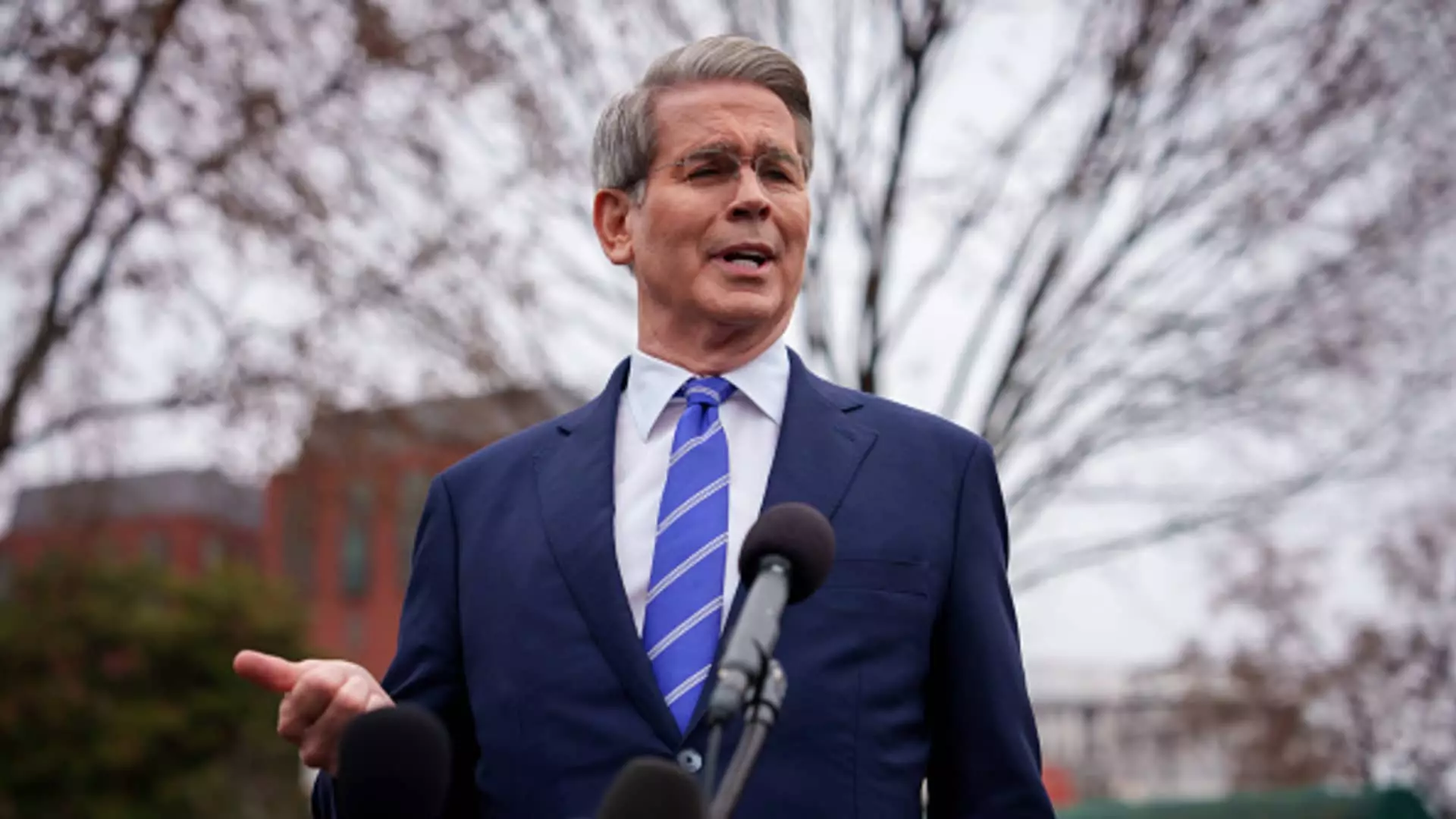In recent weeks, the discourse surrounding the stock market sell-off has taken a sharp turn, particularly with statements from Treasury Secretary Scott Bessent. He attributes the significant downturn primarily to the plummeting value of major tech stocks rather than President Trump’s controversial protectionist policies. This claim, while aimed at easing fears, masks a deeper, more unsettling reality. The economy is currently experiencing a seismic shift, and to suggest that tariff policies are merely peripheral is to ignore the broader implications of economic protectionism.
Bessent’s dismissal of the protective tariffs as inconsequential overlooks the fact that financial markets thrive on certainty and stability. With the imposition of tariffs, we have not merely seen a change in stock prices, but a growing concern about inflation and economic stagnation. While Bessent deflects blame onto external factors like the emergence of Chinese AI competitor DeepSeek, valid concerns remain about how protectionist stances may disrupt trade relationships. Economic forecasters disagree with the idea that tariffs can have merely isolated effects; they see a web of interactions that threaten to unravel consumer confidence.
The Tech Giants: A Double-Edged Sword
The so-called “Magnificent 7″—comprising giants like Apple, Amazon, and Tesla—are not just stock tickers; they represent the very soul of American innovation and entrepreneurship. However, their dramatic decline raises critical questions about sustainability. The entry of DeepSeek into the AI arena, with its promise of cheaper and better models, is not merely a wake-up call for these firms—it’s a full-scale alarm. If U.S. tech companies cannot innovate at a rapid enough pace to keep up with foreign competition, we may be staring down a precipice of long-term economic decline.
It’s troubling to consider that his administration’s tariffs could be an unwelcome distraction for these tech powerhouses, forcing them to divert resources from development and innovation toward managing tariff implications. Bessent insists that the decline is “not a MAGA problem,” yet overlooking the consequences of a 10% tariff in a global economy interconnected through complex supply chains only fuels discontent among investors and consumers alike.
A Look Behind the Market Metrics
Market metrics are often viewed as mere numbers that fluctuate on a screen, but they tell a broader story—one filled with uncertainty and anxiety. The S&P 500’s brief stint in correction territory serves as an indicator of rising fears within the investor community, emphasizing the market’s response to governmental action over intrinsic valuation. The nearly 4% drop in S&P futures signifies more than just a dip; it reflects a growing sentiment that the current administration lacks a coherent policy to maintain market stability.
An economy fueled by innovation is stymied by outdated trade practices and instability. As Bessent seeks to promote a narrative of optimism by stating, “It’s going to be fine,” it rings hollow in the face of harsh realities. Investors are looking for actionable insights and stability—not just platitudes. Ultimately, the substance of economic policy will determine whether we recover from this sell-off or spiral deeper into an economic quandary that could take years to unwind.


Leave a Reply